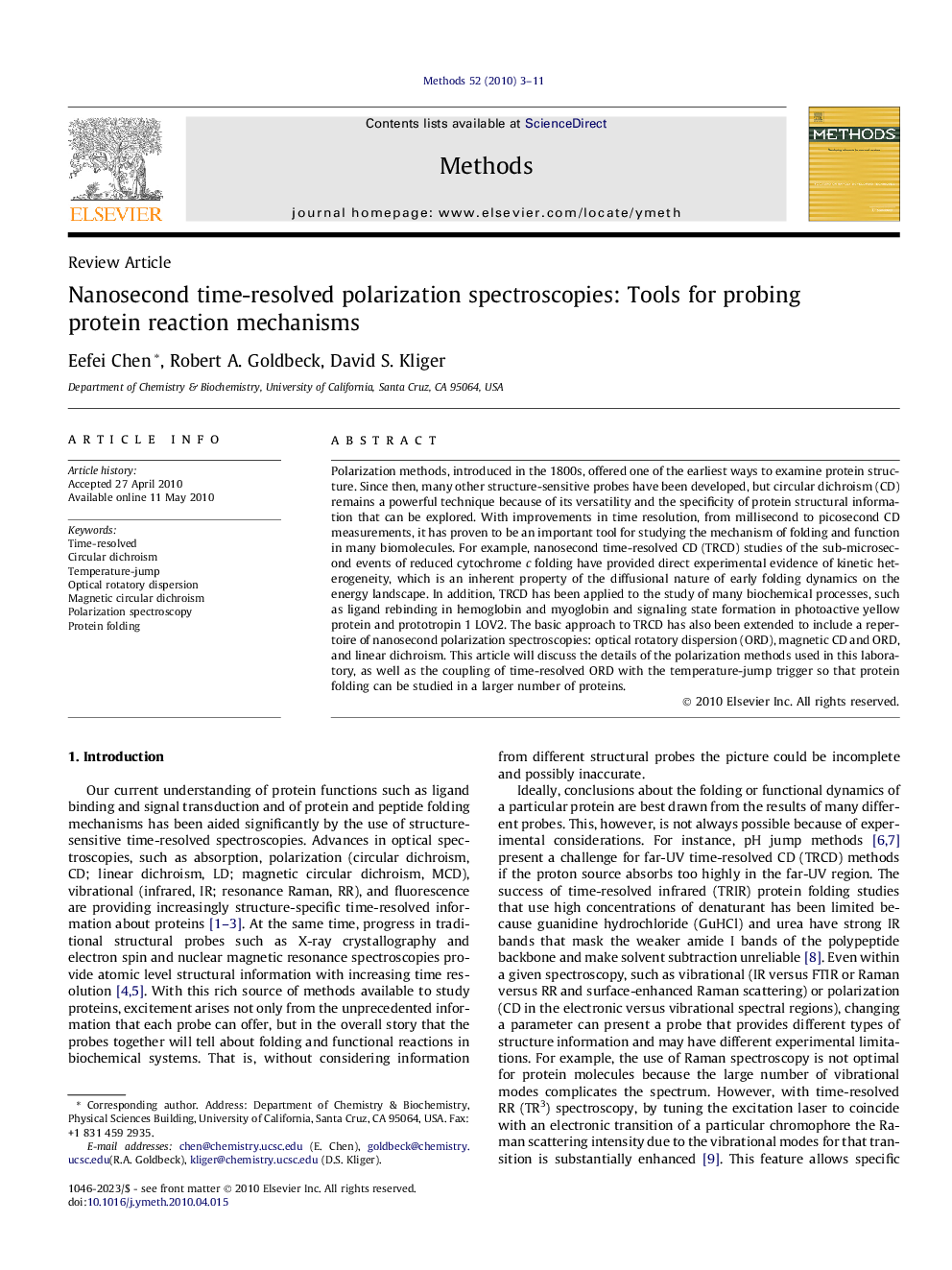| کد مقاله | کد نشریه | سال انتشار | مقاله انگلیسی | نسخه تمام متن |
|---|---|---|---|---|
| 10826067 | 1064709 | 2010 | 9 صفحه PDF | دانلود رایگان |
عنوان انگلیسی مقاله ISI
Nanosecond time-resolved polarization spectroscopies: Tools for probing protein reaction mechanisms
دانلود مقاله + سفارش ترجمه
دانلود مقاله ISI انگلیسی
رایگان برای ایرانیان
کلمات کلیدی
موضوعات مرتبط
علوم زیستی و بیوفناوری
بیوشیمی، ژنتیک و زیست شناسی مولکولی
زیست شیمی
پیش نمایش صفحه اول مقاله

چکیده انگلیسی
Polarization methods, introduced in the 1800s, offered one of the earliest ways to examine protein structure. Since then, many other structure-sensitive probes have been developed, but circular dichroism (CD) remains a powerful technique because of its versatility and the specificity of protein structural information that can be explored. With improvements in time resolution, from millisecond to picosecond CD measurements, it has proven to be an important tool for studying the mechanism of folding and function in many biomolecules. For example, nanosecond time-resolved CD (TRCD) studies of the sub-microsecond events of reduced cytochrome c folding have provided direct experimental evidence of kinetic heterogeneity, which is an inherent property of the diffusional nature of early folding dynamics on the energy landscape. In addition, TRCD has been applied to the study of many biochemical processes, such as ligand rebinding in hemoglobin and myoglobin and signaling state formation in photoactive yellow protein and prototropin 1 LOV2. The basic approach to TRCD has also been extended to include a repertoire of nanosecond polarization spectroscopies: optical rotatory dispersion (ORD), magnetic CD and ORD, and linear dichroism. This article will discuss the details of the polarization methods used in this laboratory, as well as the coupling of time-resolved ORD with the temperature-jump trigger so that protein folding can be studied in a larger number of proteins.
ناشر
Database: Elsevier - ScienceDirect (ساینس دایرکت)
Journal: Methods - Volume 52, Issue 1, September 2010, Pages 3-11
Journal: Methods - Volume 52, Issue 1, September 2010, Pages 3-11
نویسندگان
Eefei Chen, Robert A. Goldbeck, David S. Kliger,